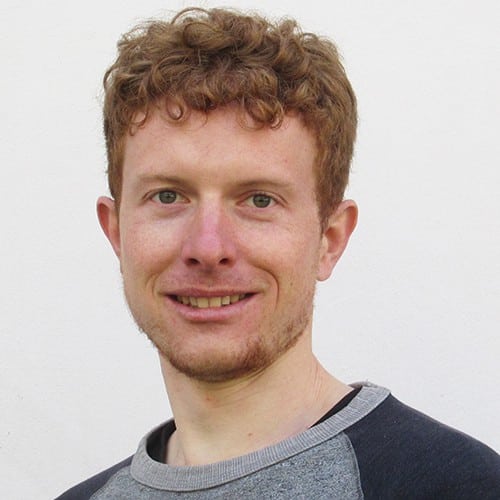Family, friends, and compatriots – a mathematical model developed by researchers at the Complexity Science Hub (CSH) shows how diaspora shapes migration flows
Existing migration models usually rely on population size and travel distance to explain and predict the spatial patterns of migration flows. “Interestingly, however, people often migrate over long distances and to smaller destinations if their diaspora is present in these places. So if there are already people somewhere, others will follow,” explains CSH researcher Rafael Prieto-Curiel. Why are there so many Brazilians living in Miami? Why do Serbians flock to Vienna’s 10th district?
Based on these observations, CSH scientists have developed a mathematical model that shows the influence of diaspora size on migration flows. “What we can observe is that even with very little information – namely the nationality of people and the size of the corresponding diaspora in a particular destination region – it is possible to reconstruct and also predict migration movements with a high degree of accuracy,” says Prieto-Curiel.
“It is not necessary to have information about the country’s economy, the person’s age, gender or language,” adds Ola Ali, PhD student at CSH and co-author of the PNAS Nexus study.
"BIRDS OF A FEATHER FLOCK TOGETHER"
The CSH team wondered if homophily – the idea that people who are alike act alike, or that “birds of a feather flock together” – could play a role in migration.
The most widely used approach for forecasting migration flows – the so-called gravity model – lacks many components, including a social and predictive element, explains Prieto-Curiel. The gravity model assumes that more populous places attract more migrants, and the closer two places are to each other, the greater the interaction and movements between them.
SOCIAL INFLUENCE
“Migration is driven by social influence and we can predict the migration of certain nationals by only looking at how many of them live in a certain city,” observes CSH researcher Fariba Karimi, one of the co-authors of the study. “Our results suggest that diasporas have a pull effect, with 100 people attracting around 12 newcomers per year in the case of Austria,” adds Prieto-Curiel
Overall, the study shows that migration is a social process with repetitive patterns. “Migration patterns are on average quite predictable and stable over time – except for shocks such as the war in Ukraine,” explains Ali.
AUSTRIA AND US
In this study, they analyzed two migration scenarios: in Austria and in the United States. In the first step, they looked at data regarding 1.5 million foreign-born individuals living in Austria, which was used to determine the size of the diaspora of different nationalities at the postal code level. Additionally, they used the international arrivals to metropolitan areas in the US from 2009 to 2019 to demonstrate the pull mechanism of diasporas.
The new model takes into consideration both intensity and assortativity factors: intensity measures the number of migrants, while assortativity captures their destination. In order to test the model, the researchers considered the diaspora size of different nationalities in Austria – including Ukrainians, Germans, Syrians, Serbians, and others – as the number of migrants existing in Austria prior to December 2022, and the arrivals as the new migrants observed after 200 days.
CONTINENTAL COUNTRY
The team turned to US data to test the model with data from another country. “The challenge here was to scale our model from an European country to a continental nation like the United States. We wanted to see if it would work for other parts of the world,” explains Prieto-Curiel.
On the basis of the number of arrivals in a particular US metropolitan area during a given year, the CSH researchers estimated the number of arrivals the following year. As they observed, homophily also influenced migration within the United States. “People from South America, for example, are four times more likely to move to Miami than to Houston. However, the opposite applies to people from Central America, who move more frequently to Houston instead,” point out the researchers.
A CHALLENGE
The study also found that people arriving from different countries tend to live in specific neighbourhoods. “Segregation is one of the unintended consequences of this process. Migrants do not necessarily seek to be surrounded by their diaspora, but frequently they are,” observe the researchers.
“Our model of migration highlights one of the biggest challenges of migration,” adds Prieto-Curiel. When migrants form segregated communities, integrating foreigners into national life becomes difficult.
BUILDING BRIDGES
“We all face a very crucial task here. Humans have a certain natural tendency to segregate. From a policymaking standpoint, we need to make sure that public services, like education and healthcare, are equally distributed across districts and that diversity is welcomed,” evaluates Karimi.
“We should provide opportunities for people to meet others who are different from themselves and form connections with them. And those opportunities can be as simple as building roads, bridges, or tram stops in between various parts of the city.”
About the study
The study “The diaspora model for human migration” by Rafael Prieto-Curiel, Ola Ali, Elma Dervić, Fariba Karimi, Elisa Omodei, Rainer Stütz, Georg Heiler, and Yurij Holovatch , was published in PNAS Nexus.








